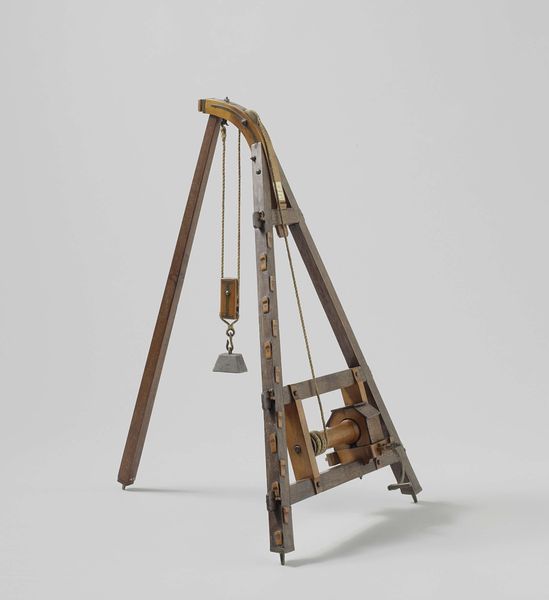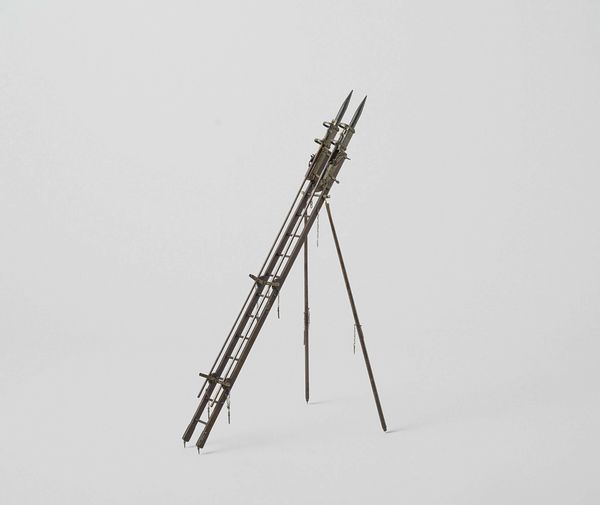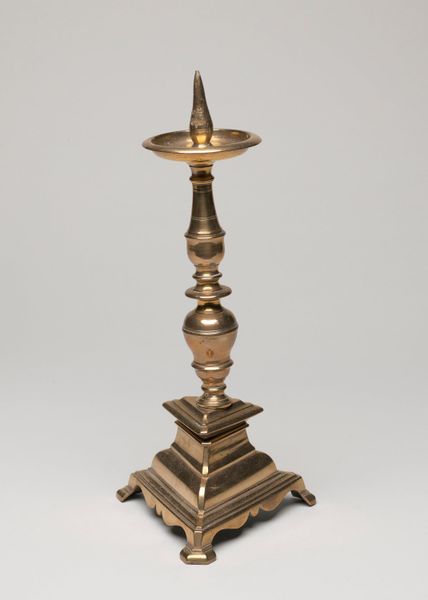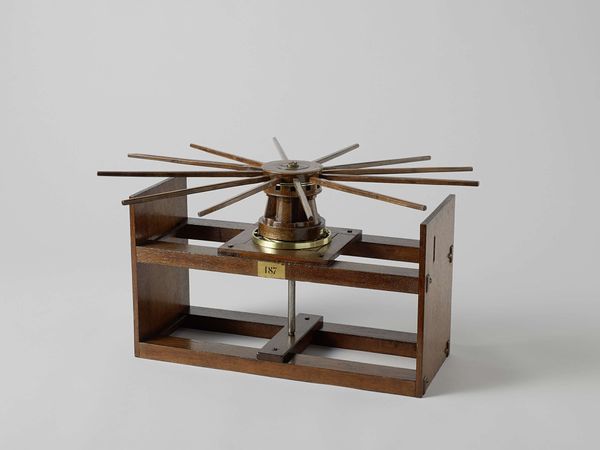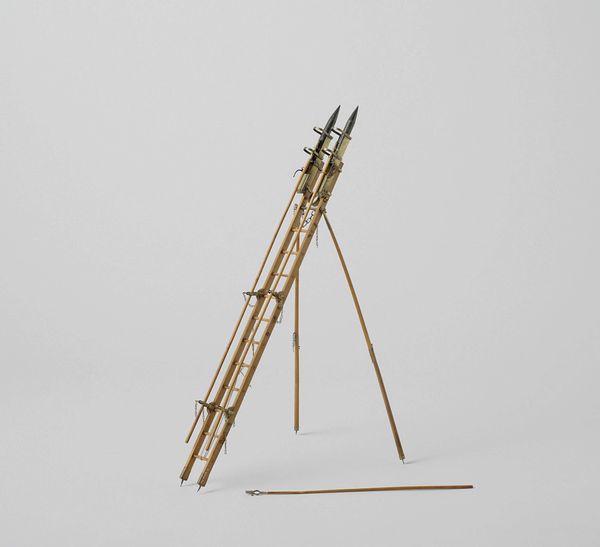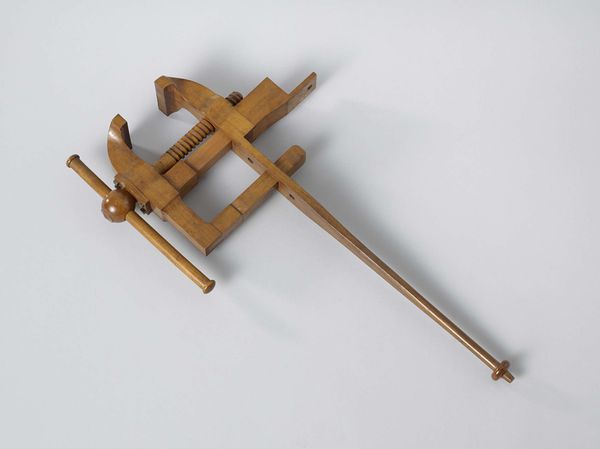
Dimensions: Unfolded, maximum width: 54 ✕ 51 ✕ 57.2 cm (21 1/4 ✕ 22 1/2 ✕ 25 1/2 in.)
Copyright: Public Domain
Curator: This elegant object, titled "Swift," dates back to between 1840 and 1850. Crafted primarily from wood, with potential textile elements, it's a piece of decorative art representative of the Arts and Crafts movement. It currently resides here at The Art Institute of Chicago. Editor: My initial impression is one of ingenious simplicity. It's almost like a mechanical flower, delicate yet purposeful. The pale wood gives it an understated, humble presence. Curator: Indeed. The 'swift' is a tool designed to hold yarn skeins while they're being unwound. This reflects the Shaker commitment to functional beauty, where utility and aesthetics are inseparable. They were striving for spiritual significance through handmade objects. Editor: The Shakers’ values were profoundly progressive. Their emphasis on equality, communal living, and craftsmanship are important to consider, particularly in a society dominated by mass production. Did their belief in gender equality impact the craft traditions within the community? Curator: Absolutely. Shaker communities empowered women by allowing them to actively shape the domestic sphere and, therefore, to affect the world at large. The materials also have symbolic meaning, for example, wood represents endurance and strength, and textiles convey ideas around comfort and home. Editor: Considering the back-breaking labor involved in textile production before industrialization, this object takes on new weight. It embodies a pre-industrial reverence for materials, the patience inherent in handcrafted goods, and a conscious rejection of materialism. I’m thinking of labor and gender here, a connection to the land and each other. Curator: That's very perceptive. It served as a visual and tactile reminder of core Shaker values. Every curve, every joint serves both a practical function and a symbolic one, encouraging meditative reflection during everyday tasks. Editor: A subtle protest then, using practical art to express counter-cultural ideas. Seeing “Swift” reminds me that resistance doesn’t always shout; sometimes, it quietly builds a more ethical world. Curator: Precisely, through beauty and utility. Examining this “Swift” allowed us to meditate not only on the form, but also the philosophical and spiritual underpinning which continue to echo today. Editor: Thank you. What began as simple utility morphed into quiet reflection and a deeper resonance that art provides when combined with meaning and intention.
Comments
No comments
Be the first to comment and join the conversation on the ultimate creative platform.


